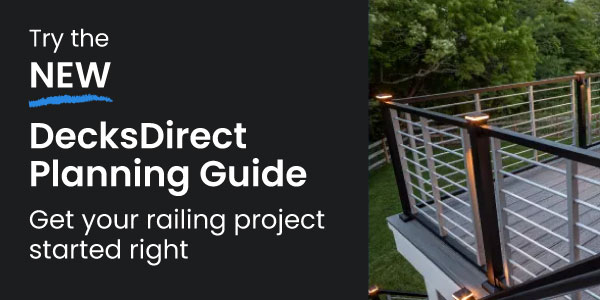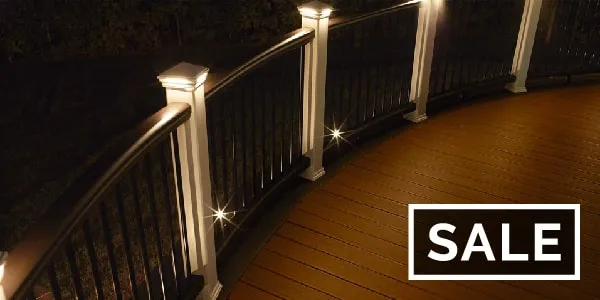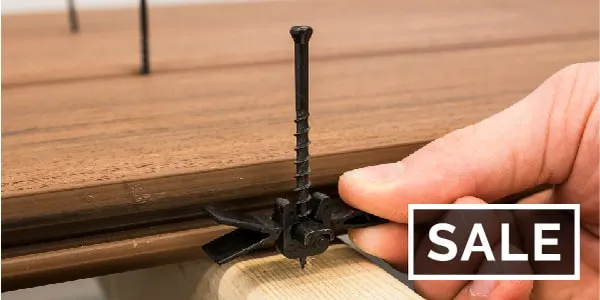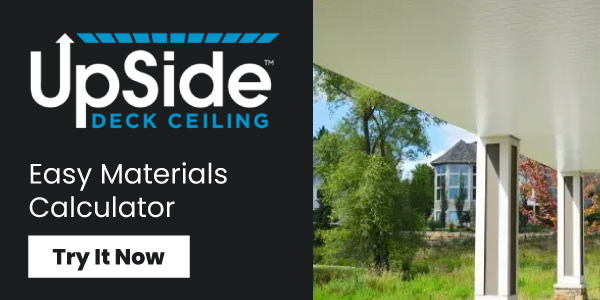How Do You Fix Loose Posts and Rails on a Deck?
Decks, porches, and patios are amazing home features - but a loose, wobbly railing can keep you from fully enjoying them.
Fortunately, most loose railings can be repaired with some easy DIY steps. Whether you've got a creaky wood railing or a loose metal railing, DecksDirect is here to help you get your railing back in tip-top shape so you and your family can safely enjoy your deck space.
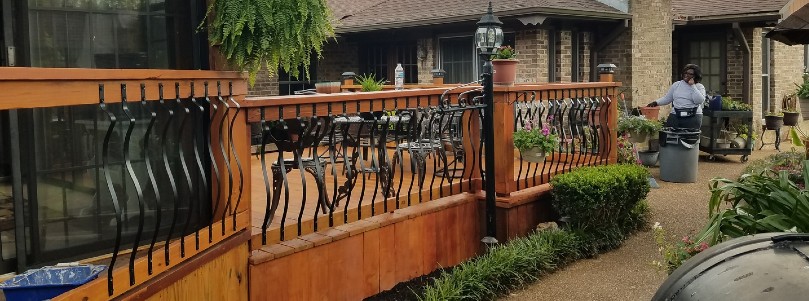
How to Repair a Loose Wood Deck Railing
1. Tighten any loose bolts or screws.
If your wood deck railing feels wobbly when you push or pull against it, it's likely a railing post to deck frame connection that's loosened. Posts should be fastened to the deck joists and beams with solid lag screws or bolts and surrounded with secure blocking.
Check each bolt and lag tightening with your power drill or ratchet to ensure each piece is fully driven. Do this to every post on your deck area that feels slightly movable. This will prevent any accident later on in the season and prevent you from having to make a second round.
2. Mount extra blocking between rim joists.
Installing extra blocking in a zig-zag pattern between the perimeter joists of your deck can help make your deck's rim joist stiff and unmoving. Doing so will increase the strength of the rail attachment and prevent your joists from bouncing over time.
3. Remove and replace any loose post-to-rail hardware.
If your deck railing posts feel sturdy, but the wooden rails between them can move, you'll want to inspect the screws, nails, or connectors used. More often than not, you'll see that metal hardware has corroded over time or loosened from its initial position. If your wood rails check out okay, we suggest removing the connecting hardware and replacing it with a newer piece.
While toenailing your top and bottom rails in place is often the easiest and cheapest option, today builders recommend against it. It can lead to more issues with wear and water-damage to your posts over time, which then leads to just replacing them. Keep your costs low and your deck rails securely in place for decades to come with steel or nylon Post and Rail Connectors.
4. Remove and replace any rails with signs of bowing, warping, or rot.
Sometimes, the issue of a wobbly deck railing isn't the fault of posts or hardware, but rather the wood deck rails themselves. If you see any notable damage on your rails, the best course of action is to switch out the rail with a replacement piece of lumber.
If rot or damage has happened to a lot of your wood railing, perhaps it's time to switch over to a new railing system altogether. Choose from options such as metal railing, vinyl deck railing, cable systems, and more to find the style that best fits the style of your outdoor space.
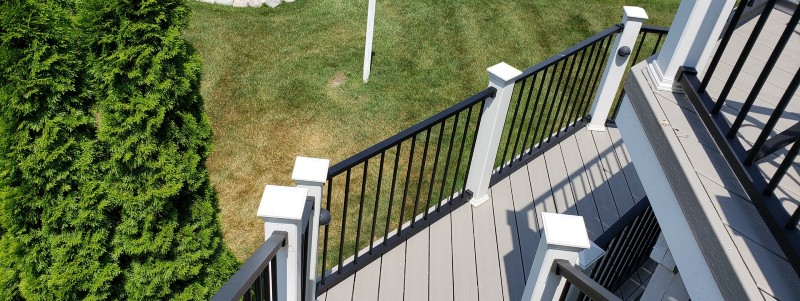
How to Repair a Wobbly Metal Railing
1. Remove any rust from the loose railing.
After many years of exposure to wind, rain, and direct sunlight, even the toughest metal railings can grow a bit loose. Start by cleaning off any rusted spots on the railing, especially railing connectors and screws, with some simple white vinegar and a clean rag.
Finding rust in a few spots doesn’t mean that the entire railing has to be replaced, but it does need to be cleared away to prevent the railing hardware from loosening further.
2. Tighten any loose post-mounting hardware.
At each deck railing post, inspect the anchoring screws or bolts in the base plate. Check for firmness, and if they're feeling weak, use a power drill or ratchet to tighten the screws into the pilot holes. Drive fasteners in until fully set into the joists or blocking.
3. Replace any broken or worn post connectors.
If any of the structural screws or bolts anchoring your metal deck posts break or have grooves that are dulling, replace them. While just one fastening connector may not seem like a big deal, the added stress on the other anchors can cause breakage to happen in no time.
For standard pressure-treated decks, hardwood decking, and more, we recommend using the contractor's favorite GRK Rugged Structural Screws in a 4-inch length or longer. For mounting on concrete or stone patios, we recommend using the Caliburn XL Concrete Screws.
4. Inspect post-to-rail brackets for damage.
Very rarely, there may be an issue with one of the four mounting brackets in a railing section. This can cause the railing section to feel loose to any pressure. Check for any breakage or unfulfilled connections in the mounting brackets and either correct or replace the piece as needed.
5. Protect post hardware in the future with post skirts.
Attaching two-piece post skirts, or post base covers, to the bottom of your installed posts will prevent future problems. Post base trim will shield your structural screws from the daily grind of water, dirt, wind, and sun exposure and keep post hardware healthy for longer. Adding skirts or covers to your metal railings can prevent a loose railing before it happens.

